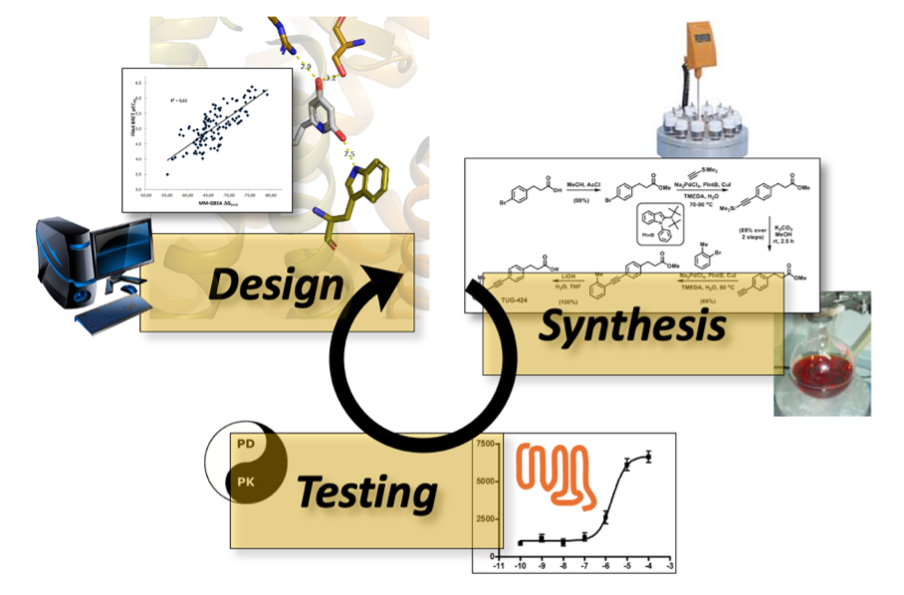The free fatty acid receptors (FFARs) make up a sub-class of GPCRs that are activated by free fatty acids (FFAs, broadly defined as a carboxylic acid attached to a saturated or unsaturated hydrocarbon chain – a definition that also includes compounds such as acetic acid) and respond to FFAs in physiological settings.
FFA1 (GPR40)
FFA1 is activated by saturated and unsaturated medium- and long-chain FFARs. The receptor is highly expressed in pancreatic β-cells, where it enhances glucose-stimulated insulin secretion, intestinal enteroendocrine cells, where it can promote release of glucose- and appetite-regulating hormones, and in the CNS, where its function is less well characterized.
FFA2 (GPR43)
FFA2 is activated by short-chain fatty acids (SCFAs), including acetic and propionic acid, a compound class that is produced in large amounts by bacterial fermentation of dietary fiber in the lower intestines and colon. The receptor is therefore likely to be an important mediator of the effects of dietary fiber, perhaps the most healthy of all food constituents, and the gut microbiota, which has in recent years been found to have important effects on human health. FFA2 is expressed in immune cells, primarily neutrophils, intestine, pancreas and fat, and is an interesting target for treatment of metabolic and inflammatory conditions.
FFA3 (GPR41)
FFA3 is also activated by SCFAs and is, like FFA2 also a likely mediator of effects from dietary fiber and the gut microbiota. The receptor also has other properties that overlap with FFA2 but has been difficult to study due to the lack of high-quality tool compounds.
FFA4 (GPR120)
FFA4 is activated by long-chain FFARs and is expressed in various organs, including intestines, lung, fat, taste buds and the CNS, as well as on on certain immune cells. The receptor is linked to regulation of metabolism and inflammation, and is a very interesting therapeutic target in these areas.
GPR84
Medium-chain fatty acids are able to activate GPR84 but it is doubted that they are sufficiently potent to make this effect relevant in the physiological setting, and the receptor is therefor still considered to be an orphan (i.e. its natural activator has not been unambiguously identified). GPR84 is found to promote inflammation and is an interesting potential target for treatment of fibrosis and other inflammatory conditions.


